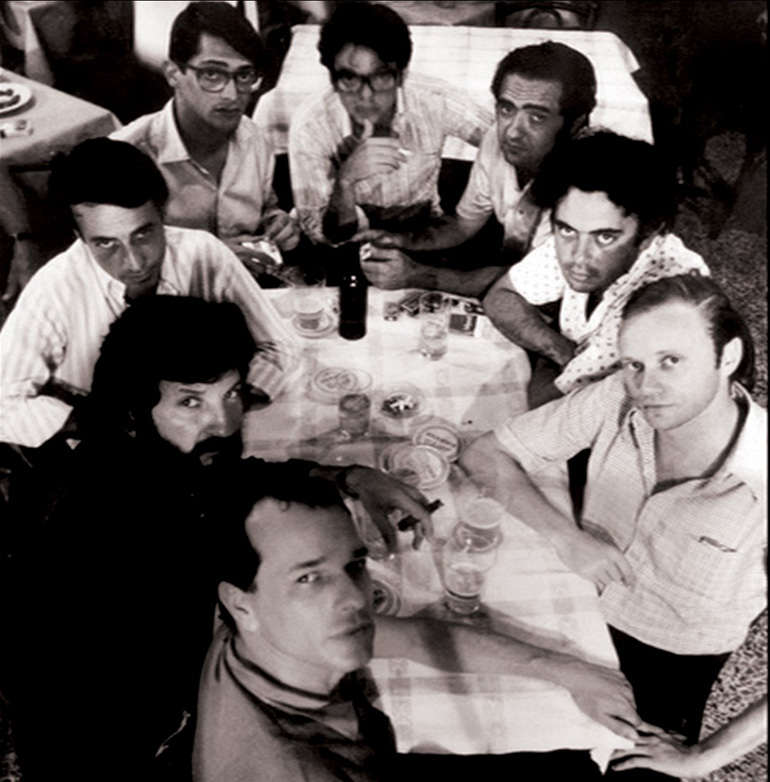EZTETYKA
Albert Elduque
 BIBLIOGRAPHY
BIBLIOGRAPHY
In the introduction to his book A Ponte Clandestina, the late José Carlos Avellar established a firm connection between the theoretical fervor and the film production of the New Latin American Cinema in the 60s and 70s: the numerous manifestos signed by the directors Fernando Birri, Glauber Rocha, Fernando E. Solanas and Octavio Getino, Julio García Espinosa, Jorge Sanjinés and Tomás Gutiérrez Alea were in dialogue with their films, in an exchange of words and images, text and movement, theory and practice, in which both forms kept reinforcing one other. According to Avellar, ‘we can try to perceive theory as a text close to the script. As a way of dreaming forms that still don’t exist beyond thinking about lived experiences; as a way of generating images; of making cinema; of seeing a film not yet made but already sensed; of suggesting models of cinematographic dramaturgy the same way a script suggests a film’ (1995: 7). That is, from text to film. And, as Avellar himself would suggest, the opposite is also possible: from the work to the theory.
Unfortunately, the New Latin American Cinema and its manifestos have often been considered to be inextricably linked to their countries of origin and the decades in which they appeared, written as they were during years that featured many movements of political and cultural emancipation. Now that the Viña del Mar International Film Festival (1967) –the symbolic foundation of a movement that had been underway for years– is almost 50 years old, this geographical and historical delimitation should be over. The theories and films of the New Latin American Cinema float free from their origins, not as museum pieces, but as interlocutors of the here and now. That is why in this issue we wanted to ask how effective these texts and films are today, how they can help us to think about our present, and how this present illuminates them and gives them a new energy.
It is time to ask how the theoretical vibrancy of these texts and films can be valuable in times of uncertainty, and to explore how their recovery in the form of myth can bring hopes and utopias back, as Eryk Rocha does in Cinema Novo (2016). It is time to revisit their critiques of cinema as an elitist and bourgeois institution, whether in the support of popular art, as in the case of García Espinosa, or in collective, non-professional acts of creation in marginalized areas, either in the indigenous communities to which Sanjinés gave a voice or in many cinema projects in schools. It is time to think how this cinema can transform reality, either through the newsreel formula or through fiction, as suggested by a beautiful text by Avellar we thought it was important to recover. And all of this while taking into account the cinema forms: figures, shots, montage.
The New Latin American Cinema forged a certain sensitivity between film and public, art and life, fiction and reality, aesthetics and politics. In the same way that each manifesto contains within it a potential film, and each film has a new reality that can germinate, the texts and images of that time are presented today as germs of new experiences in cinema and in life, and in the blurred border that unites them and keeps them apart. The power of text and film in the 1960s, from which emerged the tension between the real world and a possible world, is also the one created today between a historic past and a future to be imagined, between yesterday and tomorrow. The texts included in this issue, therefore, are frames of a thought that starts from known words and shots, but that is also open to new adventures of a reality yet to be brought into being.

BIBLIOGRAPHY
AVELLAR, José Carlos (1995). A ponte clandestina: Birri, Glauber, Solanas, García Espinosa, Sanjinés, Alea – Teorias de cinema na América Latina. Rio de Janeiro: 34, EDUSP.
No 9 EZTETYKA
Editorial. Eztetyka
Albert Elduque
DOCUMENTS
Revolution
Jorge Sanjinés
Tricontinental
Glauber Rocha
Godard by Solanas. Solanas by Godard
Jean-Luc Godard and Fernando Solanas
FILMS UNDER DISCUSSION. INTERVIEWS
A combative cinema with the people. Interview with Bolivian filmmaker Jorge Sanjinés
Cristina Alvares Beskow
Conversation with Eryk Rocha: The legacy of the eternal
Carolina Sourdis (in collaboration with Andrés Pedraza)
The necessary amateur. Cinema, education and politics. Interview with Cezar Migliorin
Albert Elduque
ARTICLES
Reading Latin American Third Cinema manifestos today
Moira Fradinger
From imperfect to popular cinema
Maria Alzuguir Gutierrez
The return of the newsreel (2011-2016) in contemporary cinematic representations of the political event
Raquel Schefer
ImagiNation
José Carlos Avellar
REVIEW
TEN BRINK, Joram and OPPENHEIMER, Joshua (eds.) Killer Images. Documentary Film, Memory and the Performance of Violence
Bruno Hachero Hernández
MONTIEL, Alejandro; MORAL, Javier and CANET, Fernando (coord.) Javier Maqua: más que un cineasta. Volumes 1 and 2
Alan Salvadó Romero

